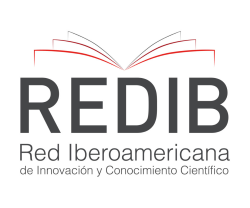Síndrome de Steven-Johnson y necrolisis epidérmica toxica: revisión bibliográfica actualizada
Resumen
La necrolisis epidérmica toxica (NET) y el Síndrome de Steven-Johnson (SJS) son trastornos de tipo mucocutaneos vesiculoampollosos agudos con alta tasa de mortalidad, el desenlace de esta patología depende en gran medida de que se identifique el agente causal lo más pronto posible, seguido de los cuidados de apoyo y el adecuado manejo de las heridas en una unidad de quemados .(Charlton et al., 2020)
Estas patologías se manifiestan con una fase prodrómica muy parecida a la influenza con malestar general, fiebre que luego comienza con dolor en membranas cutáneas y mucosas ya sea la ocular, genital u oral, para poder diferenciar estas patologías nos basaremos en el grado de afectación de la piel donde <10% corresponde a SJS, la NET se presenta con afectación >30% mientras que una superposición de SJS/NET va entre un 10-30% de afectación de la piel, en si el diagnostico de esta patologías se basan en la clínica así como una evaluación histopatológica.(Lerch et al., 2018)
A pesar de tener una alta tasa de mortalidad en los últimos años ha disminuido considerablemente, para determinar la gravedad se han empleado puntuaciones como la de SCORTEN que tiene un factor predictivo alto para la evaluación de la gravedad. (Lerch et al., 2018)
En los últimos estudios se ha determinado que el factor desencadenante son ciertos fármacos como las sulfonamias, fármacos antiepilépticos, antiinflamatorios no esteroideos, asi como el riesgo a reacciones de hipersensibilidad se han estado estudiando como posibles desencadenantes.(Noe & Micheletti, 2020)
Descargas
Citas
Cartotto, R. (2017). Burn Center Care of Patients with Stevens-Johnson Syndrome and Toxic Epidermal Necrolysis. Clinics in Plastic Surgery, 44(3), 583–595. https://doi.org/10.1016/j.cps.2017.02.016
Charlton, O. A., Harris, V., Phan, K., Mewton, E., Jackson, C., & Cooper, A. (2020). Toxic Epidermal Necrolysis and Steven-Johnson Syndrome: A Comprehensive Review. Advances in Wound Care, 9(7), 426–439. https://doi.org/10.1089/wound.2019.0977
Davis, W. D., & Schafer, P. A. (2018). Stevens-Johnson syndrome: A challenging diagnosis. Advanced Emergency Nursing Journal, 40(3), 176–182. https://doi.org/10.1097/TME.0000000000000197
Frantz, R., Huang, S., Are, A., & Motaparthi, K. (2021). Stevens–johnson syndrome and toxic epidermal necrolysis: A review of diagnosis and management. Medicina (Lithuania), 57(9), 1–15. https://doi.org/10.3390/medicina57090895
Ganekal, S., & Nagarajappa, A. (2021). Acute and Chronic Ophthalmic Involvement, Severity, and Sequelae in Stevens-Johnson Syndrome and Toxic Epidermal Necrolysis. Korean Journal of Ophthalmology, 35(3), 179–187. https://doi.org/10.3341/KJO.2020.0118
Gilbert, M., & Scherrer, L. A. (2019). Efficacy and safety of cyclosporine in Stevens–Johnson syndrome and toxic epidermal necrolysis. Dermatologic Therapy, 32(1). https://doi.org/10.1111/dth.12758
Grünwald, P., Mockenhaupt, M., Panzer, R., & Emmert, S. (2020). Erythema multiforme, Stevens-Johnson syndrome/toxic epidermal necrolysis – diagnosis and treatment. JDDG - Journal of the German Society of Dermatology, 18(6), 547–553. https://doi.org/10.1111/ddg.14118
Hasegawa, A., & Abe, R. (2020). Recent advances in managing and understanding Stevens-Johnson syndrome and toxic epidermal necrolysis. F1000Research, 9. https://doi.org/10.12688/f1000research.24748.1
Henry, D. D., Ciriaco, F. M., Araujo, R. C., Fontes, P. L. P., Rostoll-cangiano, L., Sanford, C. D., Schulmeister, T. M., Jr, C. B. D., Lamb, G. C., & Dilorenzo, N. (2020). tolerances Ac c te d us cr ip t Ac c ep te d us cr t. Cadernos de Saúde Pública, 12(1), 1–30. http://dx.doi.org/10.1016/j.ijpara.2016.09.005%0Ahttp://dx.doi.org/10.1016/j.vaccine.2015.09.060
Hötzenecker, W., & Prins, C. (2021). 20 - Eritema multiforme, síndrome de Stevens-Johnson y necrólisis epidérmica tóxica. In DermatologÃa (Fourth Edi). Elsevier Espa8#241;a, S.L.U. https://doi.org/10.1016/B978-84-9113-365-0/00020-6
Lalevée, S., Contassot, E., Ortonne, N., Gaudin, O., Ben Said, B., Vocanson, M., De Prost, N., Wolkenstein, P., Hue, S., & Ingen-Housz-Oro, S. (2020). Advances in understanding of the pathophysiology of epidermal necrolysis (Stevens-Johnson syndrome and toxic epidermal necrolysis). Annales de Dermatologie et de Venereologie, 147(6–7), 475–481. https://doi.org/10.1016/j.annder.2020.02.010
Lerch, M., Mainetti, C., Terziroli Beretta-Piccoli, B., & Harr, T. (2018). Current Perspectives on Stevens-Johnson Syndrome and Toxic Epidermal Necrolysis. Clinical Reviews in Allergy and Immunology, 54(1), 147–176. https://doi.org/10.1007/s12016-017-8654-z
Maggio, N., Firer, M., Zaid, H., Bederovsky, Y., Aboukaoud, M., Gandelman-Marton, R., Noyman, I., Ekstein, D., Blatt, I., Marom, E., Schwartzberg, E., Israel, S., Ingber, A., Brautbar, C., & Eyal, S. (2017). Causative Drugs of Stevens-Johnson Syndrome and Toxic Epidermal Necrolysis in Israel. Journal of Clinical Pharmacology, 57(7), 823–829. https://doi.org/10.1002/jcph.873
Ng, Q. X., Lee, M., & Qing, Z. (2018). ORIGINAL RESEARCH A meta-analysis of cyclosporine treatment for Stevens – Johnson syndrome / toxic epidermal necrolysis. 135–142.
Noe, M. H., & Micheletti, R. G. (2020). Diagnosis and management of Stevens-Johnson syndrome/toxic epidermal necrolysis. Clinics in Dermatology, 38(6), 607–612. https://doi.org/10.1016/j.clindermatol.2020.06.016
Nowsheen, S., Lehman, J. S., & el-Azhary, R. A. (2021). Differences between Stevens-Johnson syndrome versus toxic epidermal necrolysis. International Journal of Dermatology, 60(1), 53–59. https://doi.org/10.1111/ijd.15287
Palareti, G., Legnani, C., Cosmi, B., Antonucci, E., Erba, N., Poli, D., Testa, S., & Tosetto, A. (2017). Comparison between different D-Dimer cutoff values to assess the individual risk of recurrent venous thromboembolism: Analysis of results obtained in the DULCIS study. International Journal of Laboratory Hematology, 38(1), 42–49. https://doi.org/10.1111/ijlh.12426
Sato, S., Kanbe, T., Tamaki, Z., Furuichi, M., Uejima, Y., Suganuma, E., Takano, T., & Kawano, Y. (2018). Clinical features of Stevens–Johnson syndrome and toxic epidermal necrolysis. Pediatrics International, 60(8), 697–702. https://doi.org/10.1111/ped.13613
Seminario-Vidal, L., Kroshinsky, D., Malachowski, S. J., Sun, J., Markova, A., Beachkofsky, T. M., Kaffenberger, B. H., Ergen, E. N., Mauskar, M., Bridges, A., Calhoun, C., Cardones, A. R., Chen, S. T., Chodosh, J., Cotliar, J., Davis, M. D. P., DeNiro, K. L., Dominguez, A. R., Eljure-Téllez, J., … Micheletti, R. G. (2020). Society of Dermatology Hospitalists supportive care guidelines for the management of Stevens-Johnson syndrome/toxic epidermal necrolysis in adults. Journal of the American Academy of Dermatology, 82(6), 1553–1567. https://doi.org/10.1016/j.jaad.2020.02.066
Tsai, T. Y., Huang, I. H., Chao, Y. C., Li, H., Hsieh, T. S., Wang, H. H., Huang, Y. T., Chen, C. Y., Cheng, Y. C., Kuo, P. H., Huang, Y. C., & Tu, Y. K. (2021). Treating toxic epidermal necrolysis with systemic immunomodulating therapies: A systematic review and network meta-analysis. Journal of the American Academy of Dermatology, 84(2), 390–397. https://doi.org/10.1016/j.jaad.2020.08.122
Zhang, A. J., Nygaard, R. M., Endorf, F. W., & Hylwa, S. A. (2019). Stevens-Johnson syndrome and toxic epidermal necrolysis: retrospective review of 10-year experience. International Journal of Dermatology, 58(9), 1069–1077. https://doi.org/10.1111/ijd.14409
Zhang, S., Tang, S., Li, S., Pan, Y., & Ding, Y. (2020). Biologic TNF-alpha inhibitors in the treatment of Stevens-Johnson syndrome and toxic epidermal necrolysis: a systemic review. Journal of Dermatological Treatment, 31(1), 66–73. https://doi.org/10.1080/09546634.2019.1577548
Derechos de autor 2022 Darío Sebastián Falconí Chávez ;Jeanneth Elizabeth Jami Carrera

Esta obra está bajo licencia internacional Creative Commons Reconocimiento 4.0.











.png)




















.png)
1.png)


